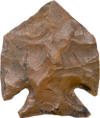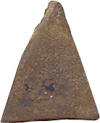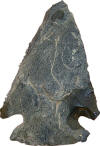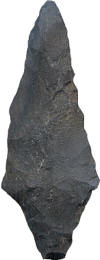About
 CLOVIS POINT |
HISTORYThe Chesapeake Watershed Archaeological Research Foundation (i.e., CWAR) was founded in 2001 as a non-profit organization with a goal to preserve and understand the vanishing archaeological record of the Chesapeake Bay watershed. With a documented human presence that spans at least 13,000 years, we are also interested in studying the long-term human interaction with the environment and ecological change. With over 11,600 linear miles of shoreline, many of these ancient human occupation sites are being threatened by the daily onslaught of wind, wave, and tidal erosion. |

JACKS REEF POINT  BRASS |
OVERVIEWArchaeological sites near the Chesapeake Bay are being lost to erosion at an alarming rate. Our founding board members consist of an eclectic group of individuals who recognized the importance of integrative and proactive research. Unlike natural resources, archaeological sites are a non-renewable resource. Before the archaeological record is lost, we believe that proactive archaeological research serves as the foundation for preserving the some information about the ancient human societies that once considered the Chesapeake estuary home. |

PALMER POINT 
LE CROY POINT 
MORROW MOUNTIAN |
RESEARCHThe Chesapeake Watershed Archaeological Research Foundation preforms compliance (i.e. Section 106) or phased geo-archaeological investigations for various private, state, and federal clients. We conduct Phase I archaeological surveys and Phase II archaeological excavations to evaluate significance. We have also conducted geologic studies, which include shoreline erosion and stablization assessments. CWAR has also sponsored the research of students and developed museum interpretive exhibits. We have documented nearly 2000 archaeologica sites in Maryland, Virginia, and Delaware. We maintain an extensive reference library, as well as, one of the largest regional archaeological type collections. Our collections have been used by researchers from around the globe. We have prepared over 60 publications, which highlight the uniqueness and importance of the bay’s archaeological resources and what these resources tell us about the past. Many of our publications have appeared in both national and international journals. We have presented a diverse series of public and professional lectures and exhibits, which summarize the results of our research. We have also summarized the outcome of our research by providing guided field tours of obscure regions |
